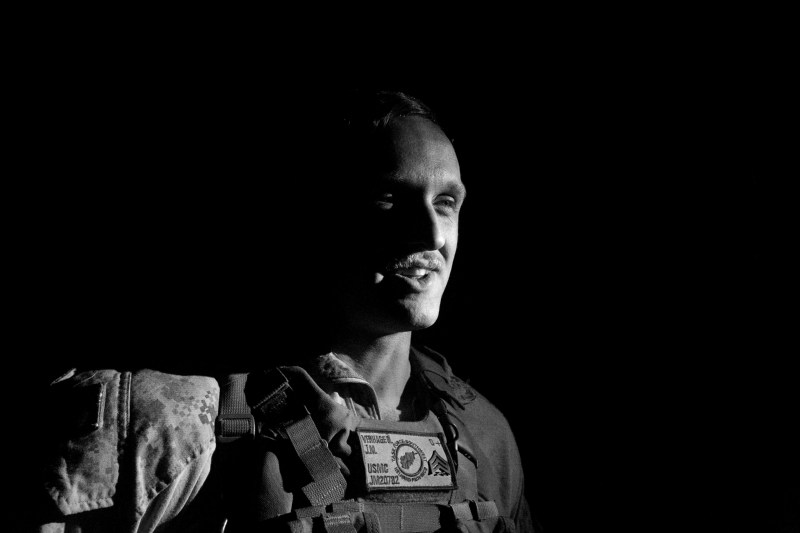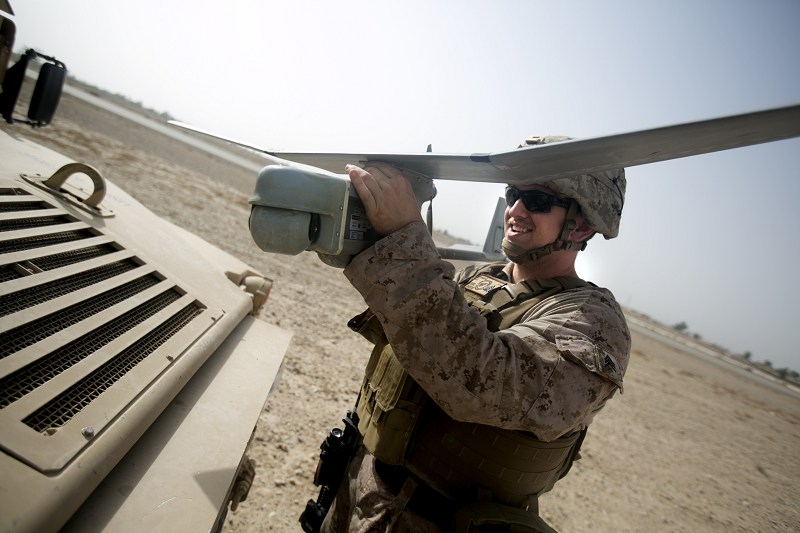 Marine Corps Sgt. John Verhage III, a native of South Brunswick, N.J., is a surveillance sensor operator with Task Force Southwest in Afghanistan, March 12, 2018. Marine Corps photo by Sgt. Sean J. Berry
Marine Corps Sgt. John Verhage III, a native of South Brunswick, N.J., is a surveillance sensor operator with Task Force Southwest in Afghanistan, March 12, 2018. Marine Corps photo by Sgt. Sean J. Berry
LASHKAR GAH, Afghanistan, April 10, 2018 — by Sgt. Sean J. Berry
“I’d rather take lessons from the past than learn lessons the hard way,” said Marine Corps Sgt. John Verhage III, who hails from South Brunswick, New Jersey, and is a surveillance sensor operator with Task Force Southwest here.
“It’s better to use something like ground sensors now, rather than something happening and wishing we would have employed measures like this beforehand,” Verhage said.
Verhage leads the ground sensor operations in Helmand province, which helps employ remote sensors as general surveillance and early warning systems to aid the Afghan National Defense and security forces.
Supporting Afghan Forces
The constant management of the remote sensors systems helps Afghan forces maintain a high level of awareness during combat operations.
“We’re all working together here; we’re protecting ourselves and the [Afghan National Police] at the same time with these sensors,” said Verhage, who has logged numerous security patrols — both mounted and dismounted — to help boost the Afghan’s defense capabilities through sensor emplacement.
“If I do my job, the police feel safer, which in turn makes us all feel safer,” he said. “Every life matters out here, and I’m just doing my part.”
Providing Warning of Enemy Activity
The ability to detect enemy activity through remote surveillance is nothing new. The Marines’ sensor control and management platoons employed unmanned remote sensor systems since 1967 during the Vietnam War.
 Marine Corps Sgt. John Verhage III, a native of South Brunswick, N.J., aids in the employment of remote sensor systems and unmanned aerial surveillance assets to help detect the movement of enemy personnel and vehicles prior to a sensor emplacement mission near Bost Airfield, Afghanistan, March 10, 2018. He is a surveillance sensor operator with Task Force Southwest. Marine Corps photo by Sgt. Sean J. Berry
Marine Corps Sgt. John Verhage III, a native of South Brunswick, N.J., aids in the employment of remote sensor systems and unmanned aerial surveillance assets to help detect the movement of enemy personnel and vehicles prior to a sensor emplacement mission near Bost Airfield, Afghanistan, March 10, 2018. He is a surveillance sensor operator with Task Force Southwest. Marine Corps photo by Sgt. Sean J. Berry
The ground sensor platoon Marines of today operate in the same way, by using the sensor systems to provide real-time warnings on enemy personnel and vehicle movement to warn Marines and their counterparts for any threat they may face.
“There’s a lot of planning that goes into this; we have to think of where it would be most effective, especially since the Afghans help us gather intel when it comes to areas of operation like this,” Verhage said.
Difficult Terrain
Afghanistan’s difficult terrain, he said, sometimes makes it challenging to find appropriate places to emplace sensors.
He added, “Sometimes, you just have to understand that there’s never really a perfect place to emplace these sensors; we just do the best we can to provide coverage.”
Verhage is one of the approximately 300 Marines with the task force deployed to Afghanistan to help in the train, advise and assist mission that supports the effectiveness of Afghan partners.
“I’m just trying to make a positive impact for the unit while I’m here,” Verhage said.


